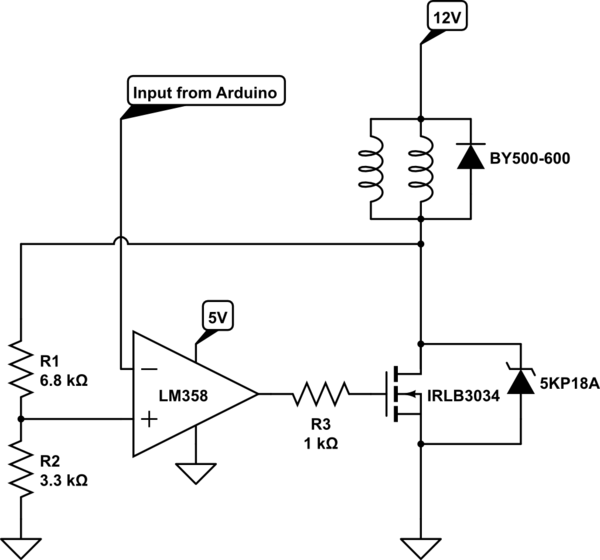I'm currently working driving two motors using some sort of PWM or switching such that they run at constant speed, regardless of load. I want to control this entire circuit using one Arduino PWM output pin.I believe that the mosfet I'm using is a logic-level one intended to be driven at 4.5V. The two motors combined shouldn't draw more than 30A stall.
Here's what I have so far:

simulate this circuit – Schematic created using CircuitLab
The two diodes are for protection. The resistor divider is simply to account for the fact that the Arduino can only output 5V. My logic is as follows: If the voltage drop across the motor is too low, then the op-amp turns the mosfet on, allowing current to flow. If the voltage across the motors is too high, then the mosfet turns off.
My concern is that, rather than oscillating, the mosfet will just end up in a stable state, thus dispersing a lot of heat. Will this happen? If so, how can I make the circuit oscillate to avoid this problem?
Thanks!
